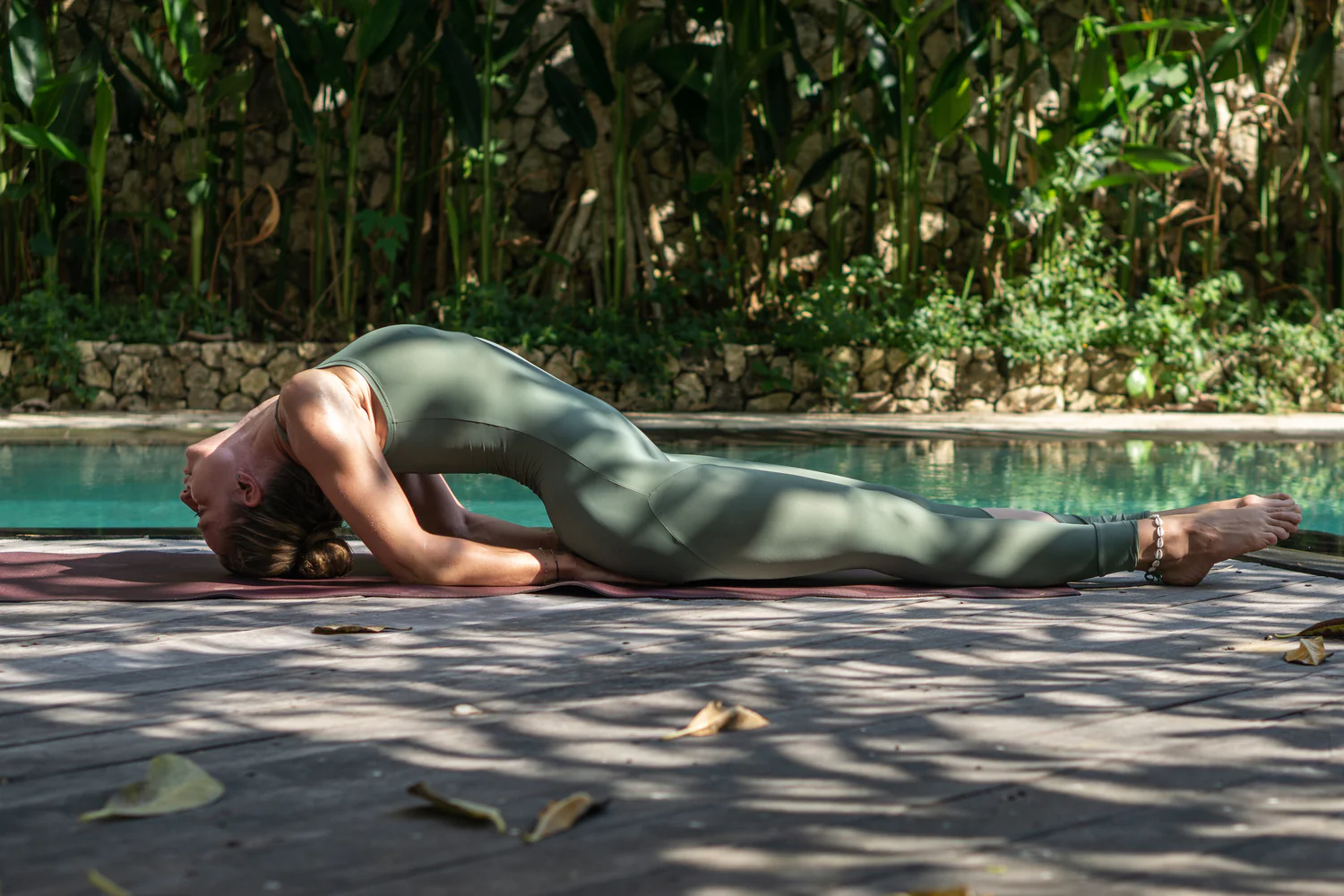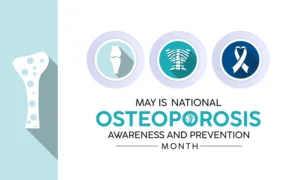Effects Of Yoga on The Urinary System (Excretory)
Yoga is an ancient mind and body practice that encompasses physical postures, breathing exercises, and meditation. Beyond its well-known benefits for flexibility, strength, and stress relief, yoga can also have positive effects on the urinary system.
The urinary system, also known as the excretory system, is responsible for removing wastes and toxins from the body through urine.
Read on to learn how various yoga poses, breathing techniques, and overall practice can benefit bladder health, urinary incontinence, and kidney function.
Strengthens Pelvic Floor Muscles
The pelvic floor muscles support the bladder and play a key role in controlling urine flow. Weak pelvic floor muscles can lead to urinary incontinence and other bladder issues. Certain yoga poses target and strengthen these muscles:
- Bridge Pose – Lying on back with knees bent, push hips up and squeeze glutes. Engages pelvic floor[1].
- Locust Pose – Lying prone, lift head, chest, and legs off floor. Tightens pelvic muscles[2].
- Tree Pose – Balance on one leg with other foot pressed to inner thigh. Pelvic tilt engages pelvic floor[3].
Regularly practicing these poses tones the pelvic floor muscles. This leads to better bladder control and reduced leakage. Yoga is recommended by doctors alongside Kegel exercises to improve urinary incontinence[4].
Young woman practising yoga in Tree Pose – Vrikshasana
Twists Release Tension
The lower back and sacrum area often hold a lot of tension. This can restrict nerve connections between the bladder and brain that control urine flow. Seated and reclined twists are key yoga poses that provide a gentle release here:
- Seated Spinal Twist – Sit with one foot crossed over and hand behind for leverage. Rotate torso and head opposite direction.
- Reclined Twist – Lie on back, hug knees to chest, and drop them over to one side. Turn head in opposite direction.
These twisting poses increase the space between the vertebrae and improve nerve conductivity from the bladder to the brain[5]. Releasing lower back tension through twists can thus alleviate urinary urgency and frequency.
Forward Folds Calm Nervous System
Stress and anxiety are common triggers for an overactive bladder and frequent urination. Forward folding poses stimulate the parasympathetic nervous system which controls the “rest and digest” response[6]. These calming poses include:
- Standing Forward Bend – Hinge at hips to hang head towards floor with legs straight.
- Seated Forward Bend – From sitting, extend torso between straight legs. Reach for toes.
- Child’s Pose – Kneel with hips over ankles and forehead to the floor, arms extended.
The relaxation response triggered by forward folds reduces bladder spasms and urinary urges. Regular practice leads to a calmer nervous system overall, making you less reactive to stress triggers.
Core Engagement Assists Bladder Control
A strong core optimizes intra-abdominal pressure which plays a key role in continence and bladder support[7]. Poses that engage the core include:
- Boat Pose – Balance on sit bones with legs raised and torso lifted.
- Plank – Hold a push-up position with arms straight and core engaged.
- Chair Pose – Squat with knees wide and arms overhead.
Powerful contraction of the transverse abdominis muscle happens in these poses, which are recommended by physical therapists for improved bladder control[8]. Developing core awareness and strength through yoga bolsters pelvic floor muscles.
Meditation Reduces Urinary Urges
The mental concentration and present-moment awareness cultivated in yoga meditation have proven effects on bladder control:
- Lowers anxiety – Less stress means fewer urgency triggers.
- Increases pain tolerance – Higher tolerance decreases response to bladder urge signals[9].
- Heightens body awareness – Better connection to bladder cues helps control response.
In a study, participants with overactive bladder did a 2-month yoga and meditation program. They experienced less urinary frequency, fewer leaks, and improved quality of life[10]. The mindfulness techniques make urges easier to tolerate.
Pranayama Optimizes Breathing Patterns
Breathing exercises called pranayama are a key part of yoga practice. They train you to use the breath to control the body’s systems, including urination:
- Dirga pranayama – Slow, deep inhales and exhales. Calms nervous system.
- Kapalabhati – Forceful exhales and passive inhales. Strengthens pelvic floor.
- Nadi shodhana – Alternate nostril breathing. Lowers stress hormones.
These conscious breathing techniques give you voluntary control over bladder function by regulating the nerves and muscles involved. Yogic breathing is recommended for urinary incontinence and overactive bladder syndrome.
Relieves Symptoms of Urinary Tract Infections
Urinary tract infections (UTIs) often cause pelvic pain and frequent, painful urination. Certain yoga poses help relieve UTI discomfort:
- Happy Baby Pose – Lying on back, grab feet and open knees wide to gently stretch inner thighs. This releases pelvic floor tension.
- Bridge Pose – Previously described for strengthening pelvic floor muscles to control leaks. Also alleviates pelvic pain.
- Child’s Pose – Gentle stretch for lower back where pain radiates during UTIs. Calms nervous system.
While not a substitute for medical treatment, yoga offers drug-free relief for UTI symptoms. Simple poses provide gentle traction and stretch irritated areas.
Young woman practising yoga in Bridge Pose – Setu Bandhasana
Stimulates Urination
Some yoga poses can help promote healthy urinary function:
- Malasana – Deep squat opens hips and puts pressure on bladder to stimulate urination.
- Dangling – Bend at hips and hang forward with head below heart. Uses gravity to improve bladder emptying.
- Wind Relieving Pose – Twist knee across body while lying on back. Twisting motion massages internal organs like kidneys and bladder.
These poses facilitate complete emptying of the bladder, preventing urine retention and infection risk. When done gently, they can be used to establish regular bathroom habits.
Bolsters Circulation to Kidneys
The kidneys filter blood, balance minerals, and produce urine as part of the urinary system. Certain yoga inversions utilize gravity to increase blood flow to the kidneys:
- Downward Facing Dog – Hands and feet on floor in inverted “V” shape.
- Legs Up the Wall – Lie on back with legs resting vertically against a wall.
- Supported Shoulderstand – Shoulders on floor and legs up while hips are supported.
Enhanced kidney circulation provides filtration and stimulates urine production. This helps prevent kidney stones, UTIs, and chronic kidney disease[11].

Excretory system
Manages Effects of Kidney Disease
For those suffering from chronic kidney disease, yoga can help manage common symptoms like insomnia, restless legs, and cardiovascular issues:
- Legs Up the Wall – Calms restless legs and aids sleep.
- Bridge Pose – Strengthens glutes and hip flexors compromised by muscle wasting.
- Fish Pose – Chest opener improves respiration.
Yoga’s combination of gentle activity, stretching, and mindfulness provides overall comfort for kidney disease patients. It counteracts declining activity levels and optimizes remaining kidney function.

Young woman practising Matsyasana yoga
Conclusion
From urinary incontinence to kidney infections, the varied practices of yoga offer many potential benefits for the urinary system. Physical poses strengthen pelvic floor muscles, stimulate circulation, stretch tense areas, and improve bladder emptying.
Breathing exercises and meditation cultivate control over urination urges and reduce anxiety triggers. Yoga’s holistic approach makes it a therapeutic lifestyle intervention for urinary dysfunction.
With guidance and patience, individuals can craft a well-rounded yoga practice to optimize bladder health and excretory system function.
Sources
[1] Hein, Jane T et al. “Effect of a 12-Week Pilates Pelvic Floor-Strengthening Program on Short-Term Measures of Stress Urinary Incontinence in Women: A Pilot Study.” Journal of alternative and complementary medicine (New York, N.Y.) vol. 26,2 (2020): 158-161. doi:10.1089/acm.2019.0330
[2] Li, Qunfeng. “The Effects of Yoga Exercise on Pelvic Floor Rehabilitation of Postpartum Women.” Journal of healthcare engineering vol. 2022 1924232. 25 Jan. 2022, doi:10.1155/2022/1924232
[3] Li, Qunfeng. “The Effects of Yoga Exercise on Pelvic Floor Rehabilitation of Postpartum Women.” Journal of healthcare engineering vol. 2022 1924232. 25 Jan. 2022, doi:10.1155/2022/1924232
[4] Wieland, L Susan et al. “Yoga for treating urinary incontinence in women.” The Cochrane database of systematic reviews vol. 2,2 CD012668. 28 Feb. 2019,
doi:10.1002/14651858.CD012668.pub2
[5] Wieland, L Susan et al. “Yoga for chronic non-specific low back pain.” The Cochrane database of systematic reviews vol. 11,11 CD010671. 18 Nov. 2022,
doi:10.1002/14651858.CD010671.pub3
[6] Ross, Alyson, and Sue Thomas. “The health benefits of yoga and exercise: a review of comparison studies.” Journal of alternative and complementary medicine (New York, N.Y.) vol. 16,1 (2010): 3-12. doi:10.1089/acm.2009.0044
[7] Liebert, Inc., Publishers, 1 Jan. 2010,
[8] Bump, R C et al. “The standardization of terminology of female pelvic organ prolapse and pelvic floor dysfunction.” American journal of obstetrics and gynecology vol. 175,1 (1996): 10-7. doi:10.1016/s0002-9378(96)70243-0
[9] Grimes, W.R., and M. Stratton. “Pelvic Floor Dysfunction.” StatPearls, updated 26 Jun. 2023, StatPearls Publishing, 2023 Jan, https://www.ncbi.nlm.nih.gov/books/NBK559246/
[10] Huang, Alison J et al. “A group-based yoga therapy intervention for urinary incontinence in women: a pilot randomized trial.” Female pelvic medicine & reconstructive surgery vol. 20,3 (2014): 147-54. doi:10.1097/SPV.0000000000000072
[11] Cramer, Holger et al. “Yoga for anxiety: A systematic review and meta-analysis of randomized controlled trials.” Depression and anxiety vol. 35,9 (2018): 830-843. doi:10.1002/da.22762







